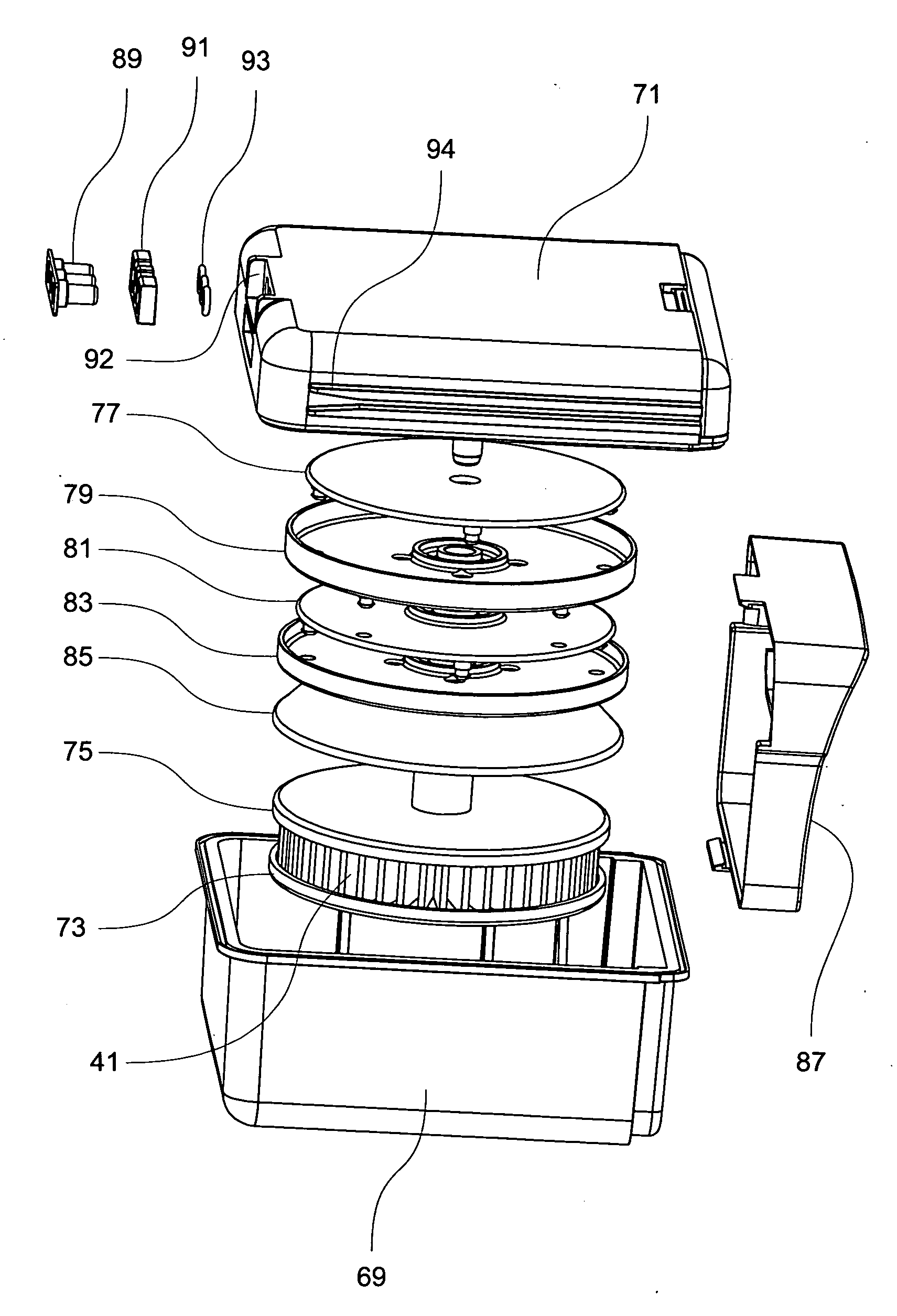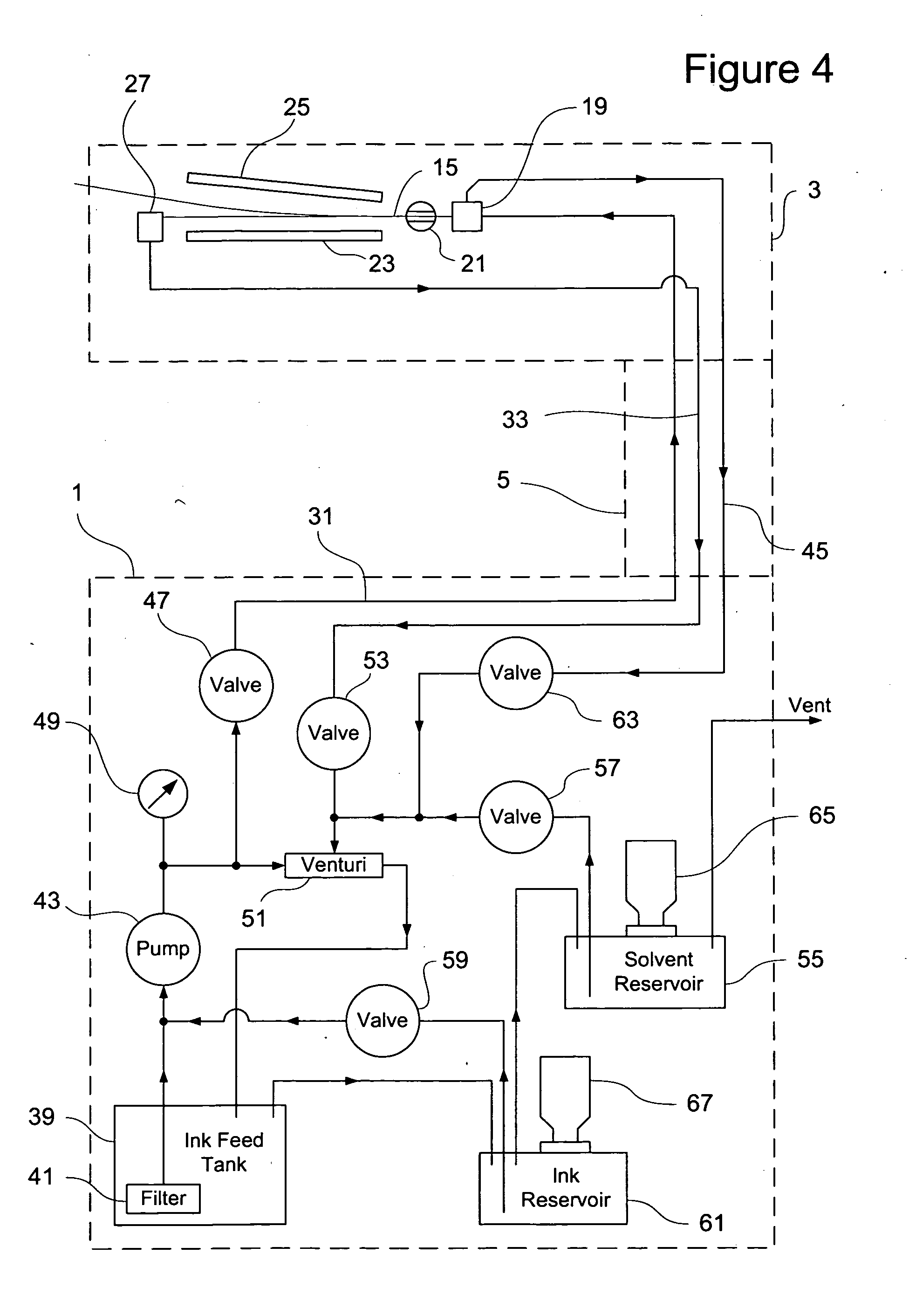Inkjet printer
a technology of inkjet printer and ink jet, which is applied in the field of inkjet printer, can solve the problems of affecting the formation of ink jet, affecting the flow rate of ink jet, and inconvenient use, so as to facilitate the separation of bubbles, slow the flow rate of bubbles, and save time
- Summary
- Abstract
- Description
- Claims
- Application Information
AI Technical Summary
Benefits of technology
Problems solved by technology
Method used
Image
Examples
Embodiment Construction
[0051]Embodiments of the invention, given by way of non-limiting example, will now be described with reference to the drawings.
[0052]FIG. 1 shows an ink jet printer. The printer has a main body 1 and a printhead 3, joined by a flexible conduit 5 (sometimes also known as an umbilical).
[0053]The main body 1 has a keypad 7 and a display 9 to enable the operator to communicate with it. The body 1 contains most of the pumps, tanks, valves and control electronics of the printer. Removable filler covers 11, 13 provide access to tanks for ink and solvent (sometimes referred to as diluent), so as to enable the tanks to be refilled.
[0054]The ink jet is formed at the printhead 3, and accordingly the printhead includes the components which must be situated in the vicinity of the jet. The conduit 5, which is typically between 1 and 10 m long, provides a flexible connection carrying the fluid and electrical lines which need to run between the main body 1 and the printhead 3. Although in principle...
PUM
 Login to View More
Login to View More Abstract
Description
Claims
Application Information
 Login to View More
Login to View More - R&D
- Intellectual Property
- Life Sciences
- Materials
- Tech Scout
- Unparalleled Data Quality
- Higher Quality Content
- 60% Fewer Hallucinations
Browse by: Latest US Patents, China's latest patents, Technical Efficacy Thesaurus, Application Domain, Technology Topic, Popular Technical Reports.
© 2025 PatSnap. All rights reserved.Legal|Privacy policy|Modern Slavery Act Transparency Statement|Sitemap|About US| Contact US: help@patsnap.com



